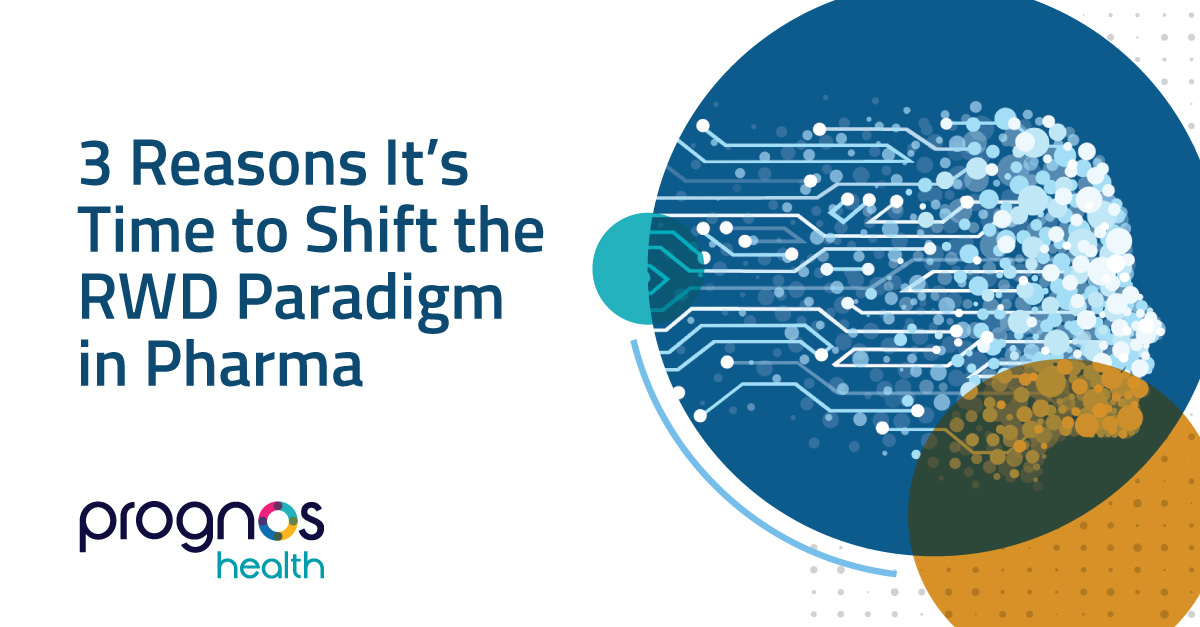3 reasons it’s time to shift the paradigm for real world data in pharma
- March 03, 2022
- Posted in Marketplace

Patient-level, real-world data (RWD) in pharma has been used for years to inform drug development and other healthcare-related decision making. The world of RWD is set to explode with expanding data sets and an increasing variety of data sources, including:
- digitized medical records,
- lab results and documentation,
- claims and billing transactions,
- product and disease registries,
- device-generated patient data, and more.
This data will become an even more important factor in generating actionable insights and improving patient outcomes. However, traditional methods of acquiring and applying this data for pharmaceutical product launch and commercialization may be ill-equipped to produce timely and cost-effective results.
A recent survey of pharmaceutical leaders by Reuters Events reinforces this assessment.
Feedback from the survey shows an existing landscape where:
- 60% of pharma RWD budgets are allocated to large data aggregators or direct purchases — a formula already fraught with challenges including expense, source management issues, and data integration complexities.
- As such, 68% of survey respondents already believe the way pharmaceutical companies currently purchase patient-level data is ripe for disruption — a sentiment that will only continue to grow as data sets continue to expand.
3 reasons why the existing paradigm for real world data in pharma needs to change to accommodate data growth:
- More sources require simplified management
Managing multiple data sources and vendors is already a challenge cited by pharmaceutical leaders in the Reuters survey. In fact, 22% of respondents ranked it as the top challenge, referring to the process as time consuming and resource sapping. The expansion of more diverse data sources will only exacerbate this issue unless new methods are employed to consolidate and harness data. For example, a digital marketplace that consolidates health data from multiple sources can allow pharmaceutical companies to quickly query and isolate desired data sets without the lengthy manual processes typically administered by data aggregators.
- Data normalization and integration must improve
Other top RWD process challenges identified through the Reuters survey include data harmonization (37%) and linkability (27%). Under-developed or non-existent industry standards surrounding patient-level health data can make normalizing assets from multiple sources a time-consuming and painstaking task. Similarly, integrating data from different sources — particularly marrying newly acquired data with existing lists — can be a delicate process requiring in-house technical and compliance expertise as well as outside expert determination. Leveraging a technology platform that does this heavy lifting for pharmaceutical companies can provide cost and time savings that provide a real competitive advantage while ensuring ongoing compliance.
- Data must deliver faster insights
There was clear consensus from the pharmaceutical leaders surveyed that RWD processes needed to improve and the enhancement most would like to see is faster speed to insight from acquired data. 67% of respondents indicated this as a top priority for improving the way they manage, store, and obtain insights from RWD. Again, digital online marketplaces can help streamline data access, analysis, and application, expediting several steps in traditional RWD processes and enabling much faster data insights.
See how Prognos Marketplace can shift the RWD paradigm and deliver faster speed to insight for your life science organization. Schedule a customized demo today.